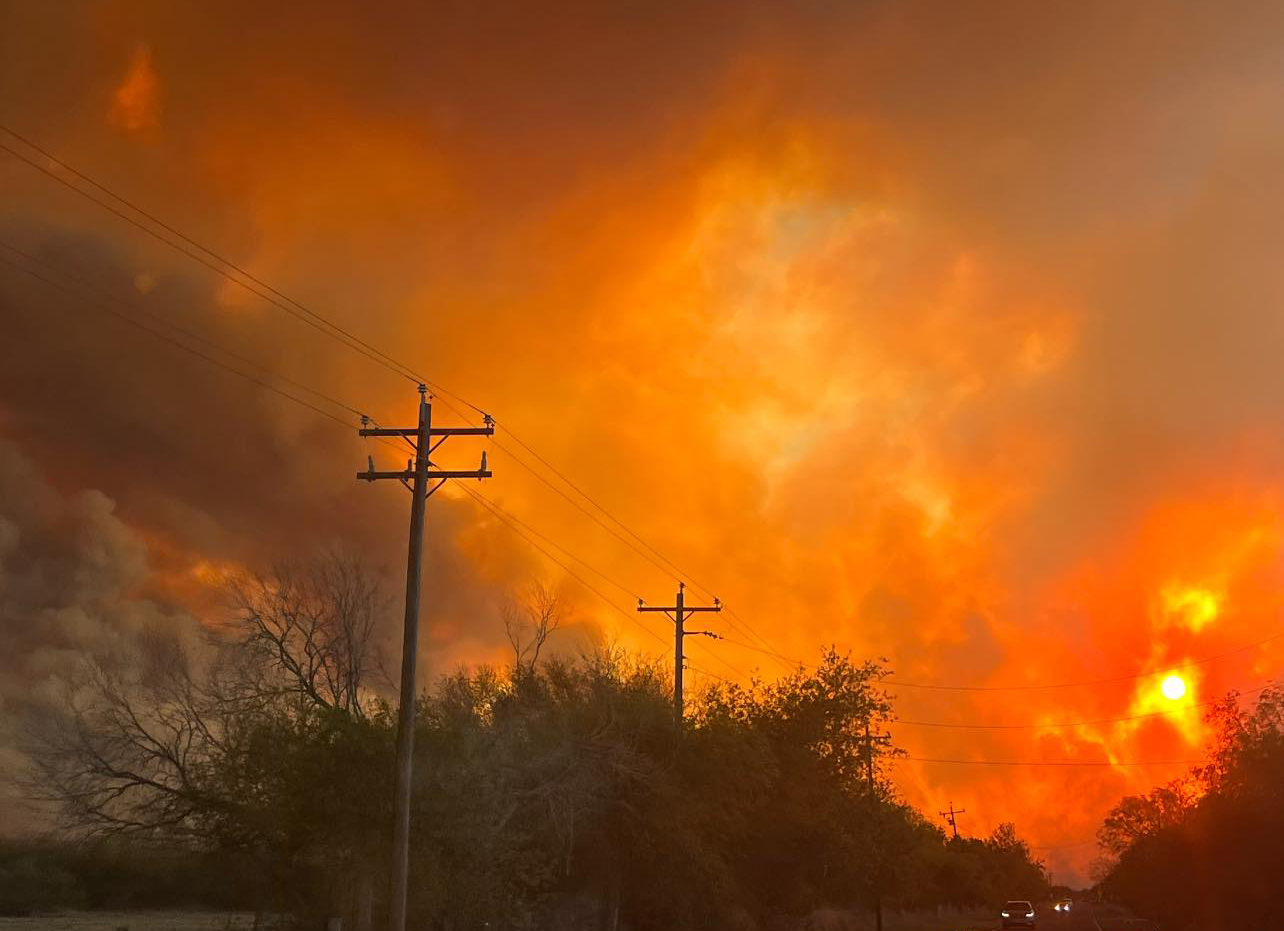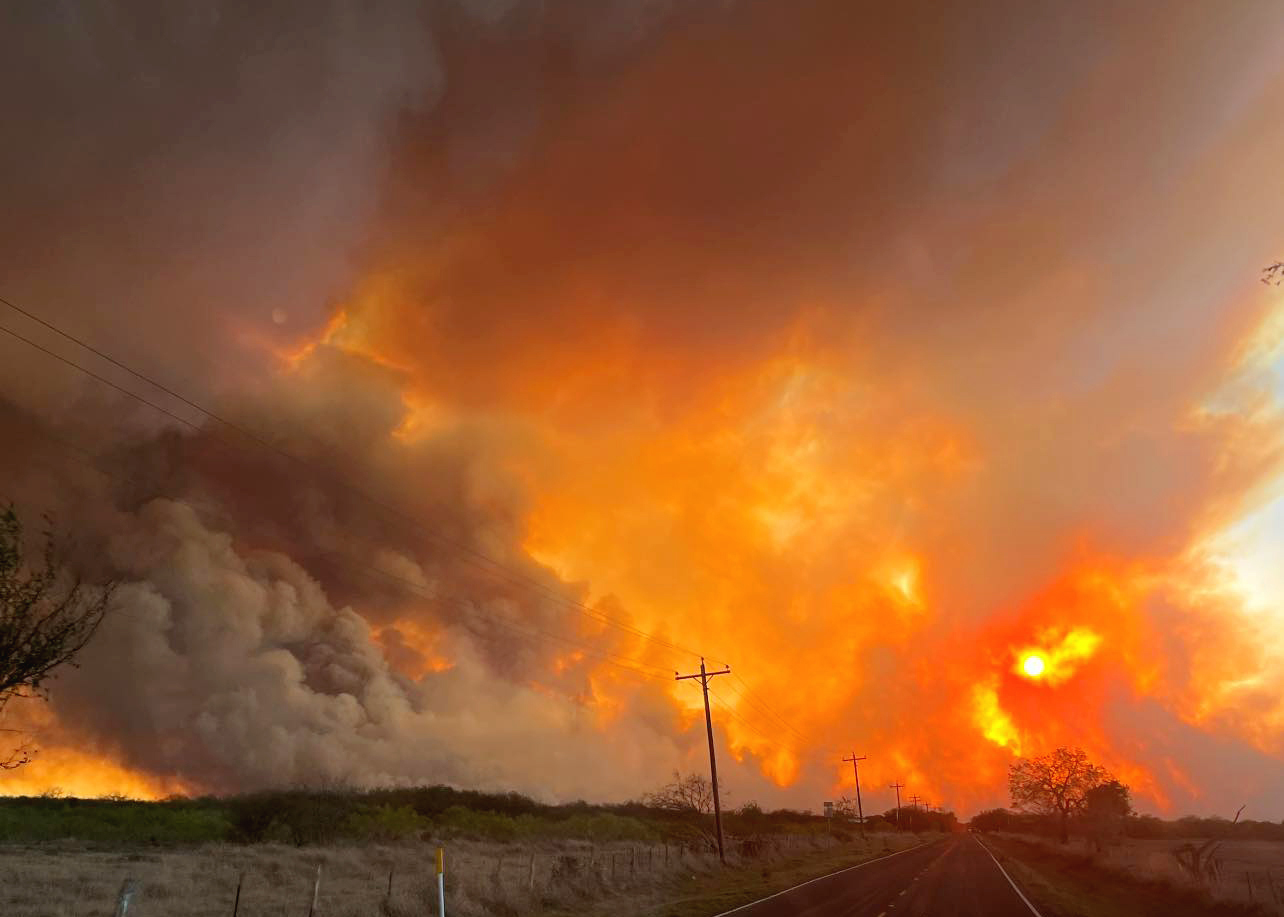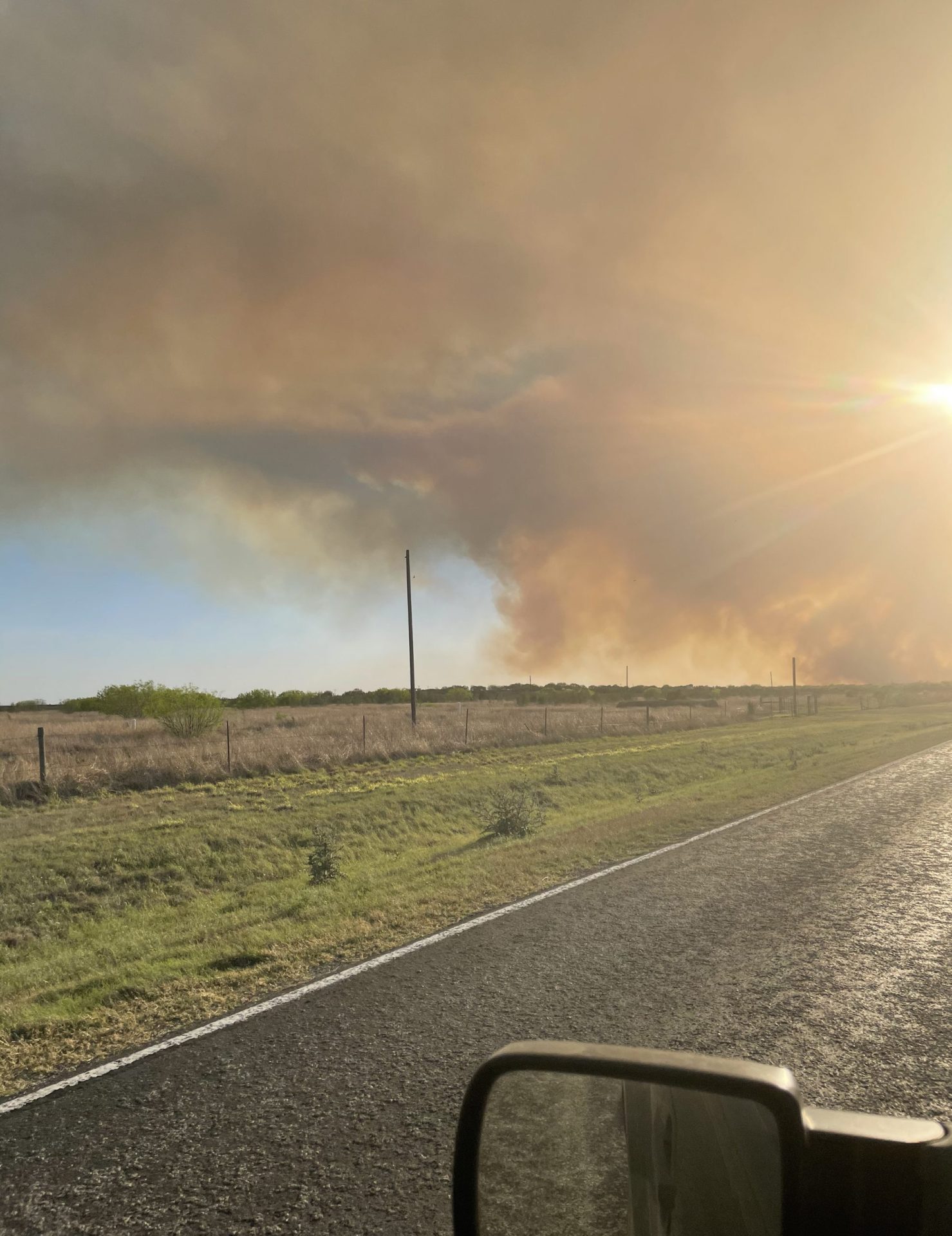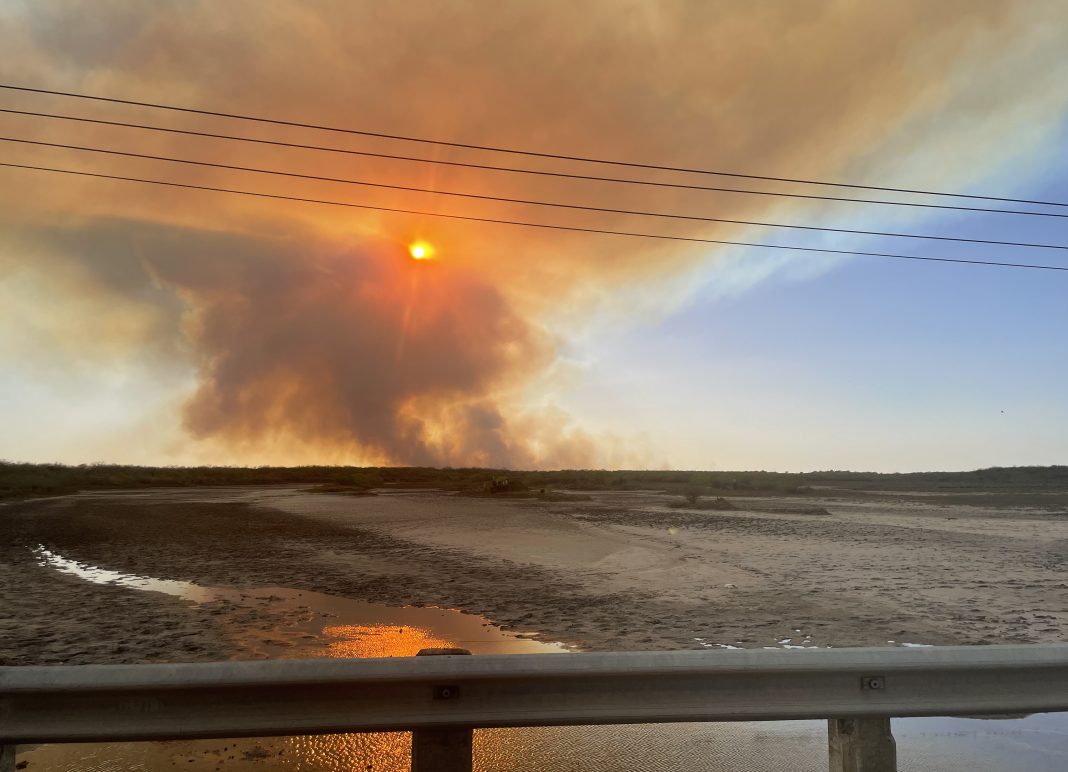EDINBURG — Had you been standing on the side of U.S. Highway 281 atop the overpass where it crosses FM 490 on Wednesday afternoon, you could have looked just to the south and seen firefighters battling a grass fire sparked by a car crash.
You may not have known it, but if you got tired of watching that fire and stared straight down FM 490 to the west, you would have had your eyes trained on yet another fire, where, 30 miles away, crews in Starr County were battling a wildfire in Rincon.
You wouldn’t have known it, standing on that overpass, but at the same time crews were battling yet another fire sparked by a car crash in Sullivan City, about 45 miles away by car.
All told, those fires burned upward of 600 acres, a few outbuildings and a mobile home in the span of a few hours, but they pale in comparison to the fires burning further up the Coastal Bend.
If you had, for some reason, stayed on that overpass overnight, on Thursday you could have looked to the north and seen a grimy layer of smoke on the horizon — evidence of the much larger Vib fire near Encino, which had burned a little less than 10,000 acres and was mostly contained as of press time.
That fire in turn is dwarfed by the Borrega fire on the King Ranch in Kenedy and Kleberg counties, which has burned somewhere between 46,000 and 60,000 acres and was only 20% contained.
Those fires have prompted preparations for evacuations, out-of-state firefighting aid and massive containment efforts.
If that bird’s eye perspective of disaster in South Texas isn’t quite nightmare-inducing, it’s certainly worrisome enough to give ranchers something to fret about over coffee, and firefighters reason to believe they’ll be smelling pretty smoky this spring.
For many of those first responders, including Emergency Management Coordinator Rick Saldaña, fire conditions and the conditions of current fires harken back to 2008, when Hidalgo County saw some-60,000 acres burn to ash, 40,000 of it in one fire. It burned, Saldaña said, equipment and buildings and cattle and wildlife.

Saldaña estimates fire damage for his county this year to stand at about 2,000 acres incinerated in some dozen-odd blazes.
The current forecast for the next few days, with somewhat calmer winds, is hopeful. But the fact of the matter is that tens of thousands of acres of grass that sprouted after hurricane rains was killed by winter freezes, a practical tinderbox worth of fuel larger than some New England states that’s infinitely combustible when paired with low rainfall, low humidity and that dang wind.
It’s a powder keg.
“Right now our conditions are primed for a magnitude of a fire, just like the one that is happening in Kleberg and Kenedy County right now,” Saldaña said. “We’re talking about 60,000 acres there, and it has not been contained. So we don’t want that to happen in Hidalgo County.”
Multiple crews from the Rio Grande Valley headed north to help assist with that blazing Borrega fire on the King Ranch on Thursday, among them a wildland firefighting crew from the Weslaco Fire Department.
That crew was originally dispatched to Falfurrias in a support capacity; that didn’t last long, and in short order Thursday, they found themselves on the edge of the Borrega fire.
Weslaco Fire Chief Antonio Lopez said mutual aid — being willing and able to fight a fire that’s not in your backyard — is a lifesaver. Lopez said crews from across the Valley pounced on those fires in Edinburg and Sullivan City on Wednesday, overwhelming them and staving off what could have turned into something like the wildfires raging farther north.
“That’s what’s helping us this season,” he said. “That’s how we’ve been able to keep up with this.”
The result of not responding quickly can be grave, especially for ranchers.

The term “grass fire” can sound almost benign, especially compared to those more ominously sounding forest fires and building fires.
People tend to forget that an awful lot of cows live on grass in South Texas and a lot of buildings adjoin grassy pastures.
That Starr County fire in Rincon is a good example of the sheer havoc even a small brushland blaze can wreak.
Craig Teplicek is a farmer — though he says if you can make it rain, you can call him just about whatever you want — who works some of that land that burnt.
There’s a lot of impolite terms to describe the picture Teplicek painted of the fire. It was, at the very least, a mess.
“I didn’t think they were gonna stop it,” he said. “I thought it was done, it was gonna burn all the way to 83.”
Teplicek describes running around with 5-gallon buckets of water, trying to put out the fire licking at a barn near his grain elevators. Nearby, firefighters from San Isidro and Rio Grande City fought a fiendish conflagration being fueled by a fierce wind. Cowboys on horses on a neighbor’s piece coaxed cattle out of the brush, through the smoke, to trucks and trailers ready to whisk them away.
Eventually, a neighbor with a maintainer plowed a firebreak. That seemed to do the trick.
“If it hadn’t been for that maintainer, it might’ve burned up about 10,000 (acres), cause they went and put a firelane around one of the pastures and stopped it,” Teplicek said. “But they were moving cattle like crazy.”
San Isidro Fire Chief Bernabe Benavides says the cause of the fire is under investigation and that he didn’t hear of any loss of livestock, though there was that mobile home that burned up. Benavides said his department is seeing three to five serious fires like that a week, fires that burn anywhere from 100 to 1,000 acres. In less-arid weather, he said, the department may see four or five significant fires a month.
Conditions and call volume prompted the department to buy a new engine better equipped to extinguish structure fires last week.
“Once a department decides to purchase a new apparatus, you’ve got to realize the situation’s dire,” Benavides said.

Aside from a casualty or a home burning, agricultural loss is at the forefront of the mind of anyone looking at fire conditions in South Texas.
Without firebreaks — which authorities emphatically urge — Hidalgo County Extension Agent Vidal Saenz says farmers and ranchers stand to lose equipment, livestock, buildings and grazeland.
Even if they’re not in the path of a raging wildfire, Saenz says South Texas agriculturalists are simply in need of a good rain.
“The price of hay’s going to go up, because we’re in a bad drought and we haven’t really come out of winter,” he said. “The grass hasn’t really taken off because there’s not a lot of moisture, so livestock producers are hurting right now.”
Conditions have authorities asking — almost pleading — with residents to be cautious. There’s the usual precautions: beware of sparks if you’re doing outdoor construction, pick another time to burn brush, refrain from dragging that chain behind your truck.
Perhaps, they say, it’s a good time to cook your steak indoors, and if you do barbecue outside, be dang careful. Don’t drive your car in the tall grass; a catalytic converter makes a decent matchstick.
They’re desperate for people to follow those precautions because, without a significant change in conditions, things are going to stay flammable.
“One of the things we want the citizens to know,” Lopez, the Weslaco fire chief, said, “is it’s not over yet.”





